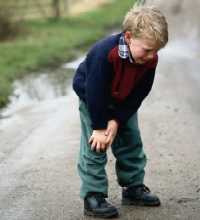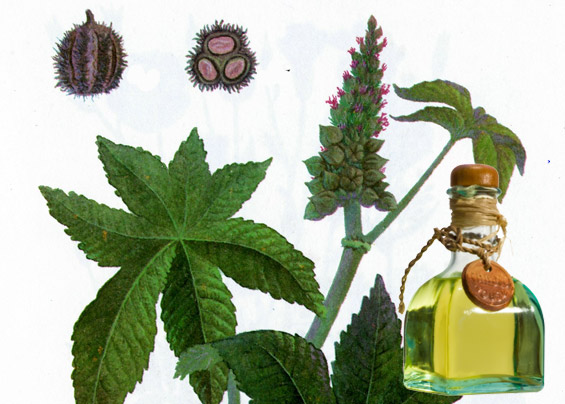Growing up with arthritis can be challenging. However, with care from a team of rheumatology professionals, most children with arthritis live full and active lives. There are various types of childhood arthritis, which can last from several months to many years. In every instance, early diagnosis and treatment can help avoid joint damage.
Fast Facts
Juvenile idiopathic arthritis—commonly called JIA—may involve one or many joints, and cause other symptoms such as fevers, rash and/or eye inflammation.
Arthritis in children is treatable.
It is important to seek treatment from health care professionals who are knowledgeable about childhood arthritis.
Federal and state programs may provide assistance with school accommodations or services.
What is Juvenile Idiopathic Arthritis (JIA)?
There are many terms used to describe a child with chronic arthritis. These include juvenile rheumatoid arthritis, juvenile chronic arthritis and juvenile idiopathic arthritis. Whilechildren4
JIA is used most by specialists in pediatric rheumatology, JRA is commonly used in the United States.
Several types of arthritis, all involving chronic (long-term) joint inflammation, fall under the JIA heading. This inflammation begins before patients reach the age of 16, and symptoms last from 6 weeks to 3 months to be called chronic. JIA may involve one or many joints, and cause other symptoms such as fevers, rash and/or eye inflammation.
Systemic onset JIA affects about 10 percent of children with arthritis. It begins with repeating fevers that can be 103°F or higher, often accompanied by a salmon-colored rash that comes and goes. Systemic onset JIA may cause inflammation of the internal organs as well as the joints, though joint swelling may not appear until months or even years after the fevers begin. Anemia (a low red blood cell count) and elevated white blood cell counts are also typical findings in blood tests ordered to evaluate the fevers and ongoing symptoms. Arthritis may persist even after the fevers and other symptoms have disappeared.
Oligoarticular JIA, which involves fewer than five joints in its first stages, affects about half of all children with arthritis. Girls are more at risk than boys. Older children with oligoarticular JIA may develop “extended” arthritis that involves multiple joints and lasts into adulthood. Children who develop the oligoarticular form of JIA when they are younger than 7 years old have the best chance of having their joint disease subside with time. They are, however, at increased risk of developing an inflammatory eye problem (iritis or uveitis). Eye inflammation may persist independently of the arthritis. Because iritis usually does not cause symptoms, regular exams by an ophthalmologist (eye doctor) are essential to detect these conditions and identify treatment to prevent vision loss.
Polyarticular JIA affects five or more joints and can begin at any age. Children diagnosed with polyarticular JIA in their teens may actually have the adult form of rheumatoid arthritis at an earlier-than-usual age.
With Psoriatic Arthritis, children have both arthritis and a skin disease called psoriasis or a family history of psoriasis in a parent or sibling. Typical signs of psoriatic arthritis include nail changes and widespread swelling of a toe or finger called dactylitis.
Enthesitis-Related Arthritis is a form of JIA that often involves attachments of ligaments as well as the spine. This form is sometimes called a spondyloarthropathy. These children may have joint pain without obvious swelling and may complain of back pain and stiffness.
Some children with arthritis develop uveitis, an inflammation of the eye.
What causes JIA?
Malfunctioning of the immune system in JIA targets the lining of the joint, known as the synovial membrane. This causes inflammation. When the inflammation persists, joint damage may occur. (See diagram of normal joint versus inflamed joint below.)
It is not known what causes the immune system to malfunction in JIA. These conditions are not considered hereditary and rarely involve more than one family member. Research suggests that some individuals may have a genetic tendency to develop JIA, but develop the condition only after exposure to an infection or other unknown trigger. Dietary and emotional factors do not appear to play a role in the development of JIA.
Who gets JIA?
About 1 child in every 1,000 develops some type of juvenile arthritis. These disorders can affect children at any age, although rarely in the first six months of life. It is estimated that around 300,000 children in the United States have been diagnosed with JIA.
How is JIA diagnosed?
JIA may be difficult to diagnose because some children may not complain of pain at first, and joint swelling may not be obvious. There is no blood test that can be used to diagnose the condition and adults with rheumatoid arthritis typically have a positive rheumatoid factor blood test, but children with JIA typically have a negative rheumatoid factor blood test. As a result, diagnosis of JIA depends on physical findings, medical history and the exclusion of other diagnoses. Typical symptoms include:
• limping
• stiffness when awakening
• reluctance to use an arm or leg
• reduced activity level
• persistent fever
• joint swelling
• difficulty with fine motor activities
Other conditions that can look like JIA, including infections, childhood cancer, bone disorders, Lyme disease and lupus also must be ruled out before a diagnosis of JIA can be confirmed.
How is JIA treated?
Optimal care is tailored for each child with JIA and provided by an experienced team of health care providers that should include a pediatric rheumatologist, physical and occupational therapist, social worker and nurse specialist. This core team can coordinate efforts with the child's pediatrician, adult rheumatologists, other physicians (such as an ophthalmologist or orthopedic surgeon) and other health professionals (dentist, nutritionist or psychologist) as well as reach out to schools and additional community resources as necessary to ensure that the child receives the best care possible.
The overall treatment goal is to control symptoms, prevent joint damage and maintain function.
The first line of treatment involves a non-steroidal anti-inflammatory drug or NSAID. Examples of NSAIDs, such as ibuprofen (such as Motrin or Advil) or naproxen (Naprosyn), administered in a dose appropriate for the child’s weight. Younger children may be given liquid preparations or medications that require less frequent use. Because NSAIDs can cause gastrointestinal distress, such as stomachaches, they should be taken with food.
Disease modifying drugs—commonly called DMARDs—are added as a second-line treatment when arthritis does not respond to NSAIDs. DMARDs include methotrexate (Rheumatrex), leflunamide (Arava) and more recently developed medications known as biologics. The biologics include anti-tumor necrosis factor agents such as etanercept (Enbrel); infliximab (Remicade); adalimumab (Humira); abatacept (Orencia); anakinra (Kineret;); canakinumab (Ilaris) and tocilizumab (Actemra). Each of these medications can cause side effects that need to be monitored and discussed with the pediatric rheumatologist treating your child. Most of these treatments are approved for use in children as well as adults. In addition, researchers are developing new treatments.
When only a single joint is involved, a steroid can be injected into the joint before any additional medications are given. Oral steroids such as prednisone (Deltasone, Orasone, Prelone, Orapred) may be used in certain situations, but only for as short a time and at the lowest dose possible. The long-term use of steroids is associated with unacceptable side effects such as weight gain, poor growth, osteoporosis, cataracts, avascular necrosis, hypertension, and risk of infection.
Prevention
Because the causes of JIA are unknown, no one knows how to prevent these conditions.
Children living with arthritis
Children with JIA should attend school, participate in extra-curricular and family activities, and live life as normally as possible. To foster a healthy transition to adulthood, adolescents with JIA should be allowed to enjoy independent activities, such as taking a part-time job and learning to drive.
A positive outlook and continued physical activity will help. Physical and occupational therapy can increase joint motion, reduce pain, improve function, and increase strength and endurance. Therapists may construct splints to prevent permanent joint tightening or deformities, and work with school-based therapists to address issues at school.
Opportunities for the child to interact with other children who have arthritis may be available in or near your community. The rheumatology team may be able to provide information about summer camps and other group activities. The local chapter of the Arthritis Foundation can help connect families and provide support.
Parents should be familiar with Federal Act 504, which may provide children with JIA special accommodations at school. Families with children with rheumatic diseases may be eligible for assistance through state agencies or services such as vocational rehabilitation. They may also benefit from information and activities available through the Juvenile Arthritis Alliance, listed below under resources.
Points to remember
• Arthritis in children consists of several diseases that may present in different ways.
• In spite of their diagnosis, most children with arthritis can expect to live normal lives.
• Ask the rheumatology team about summer camps and opportunities to meet other children with arthritis.
• Some children with JIA have their disease go into remission.
• This condition is not directly inherited from the mother or father.
The rheumatologist's role in the treatment of arthritis in children
The best care for children with arthritis is provided by a pediatric rheumatology team that has extensive experience, and can diagnose and manage the complex needs of the child and family most effectively. The core team may consist of a pediatric rheumatologist, physical and occupational therapist, social worker, and nurse specialist. These professionals can coordinate care with the child's pediatrician, adult rheumatologists, other physicians and health professionals, as well as schools and community resources to ensure the child's best long-term physical and psychological health.
Source: rheumatology.org







